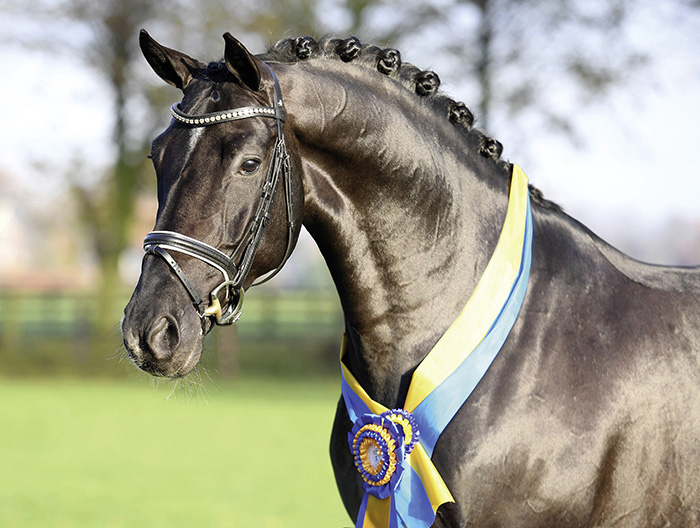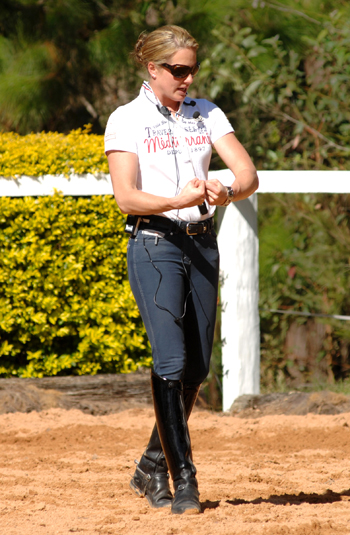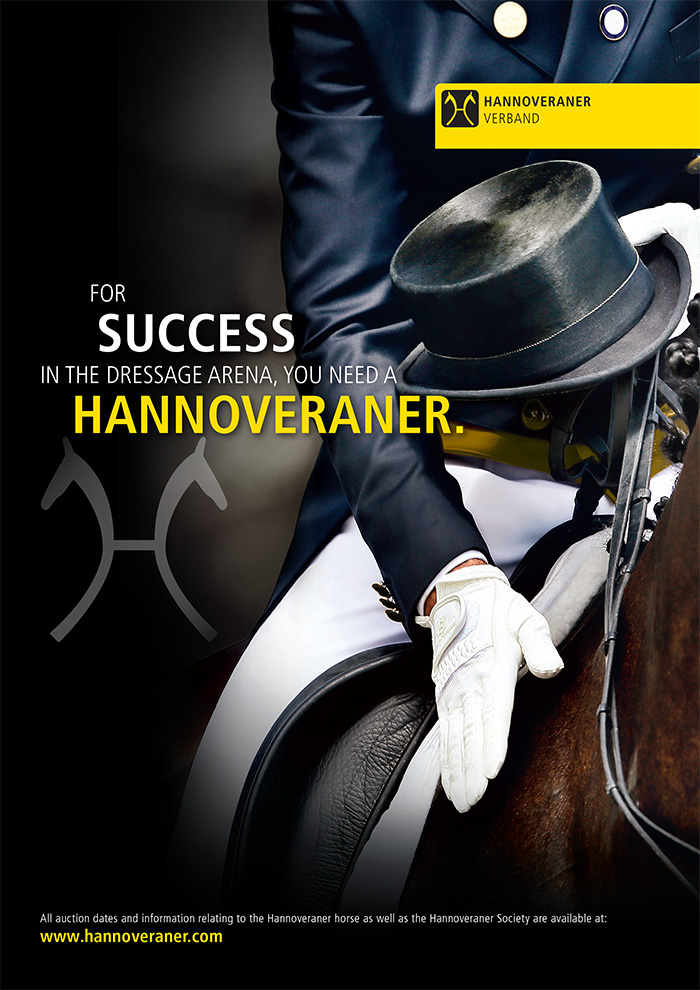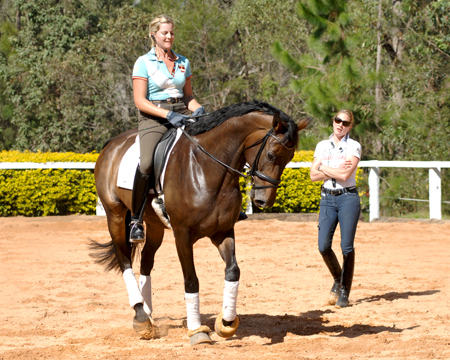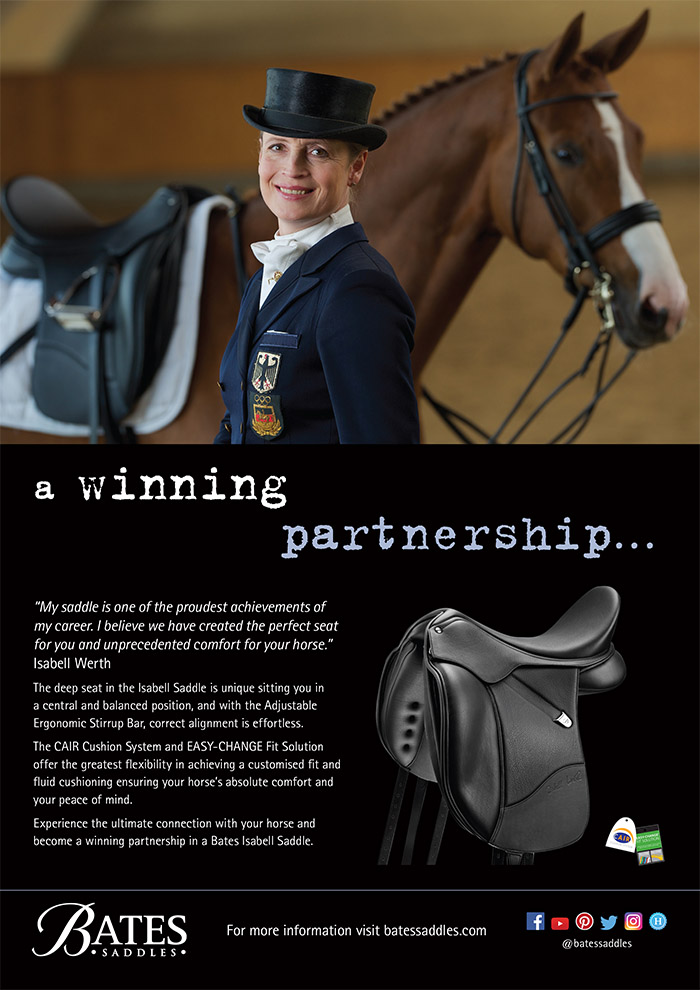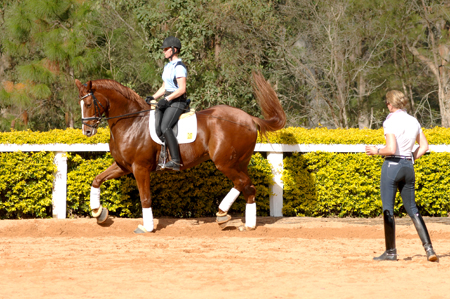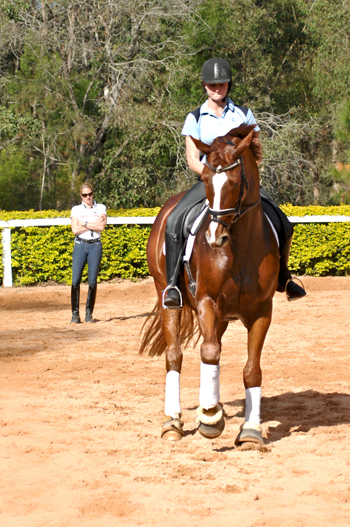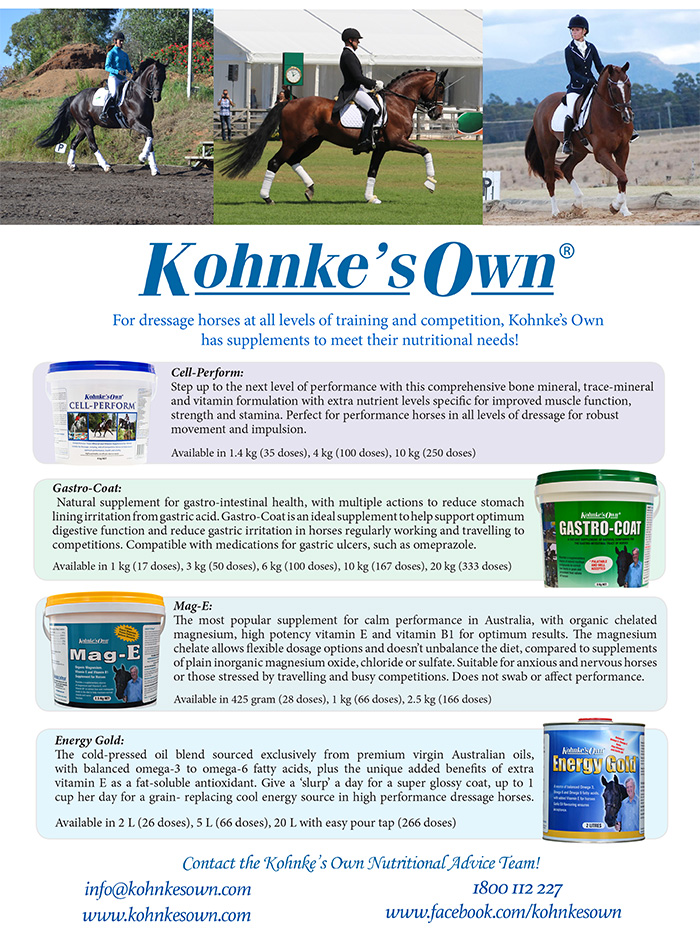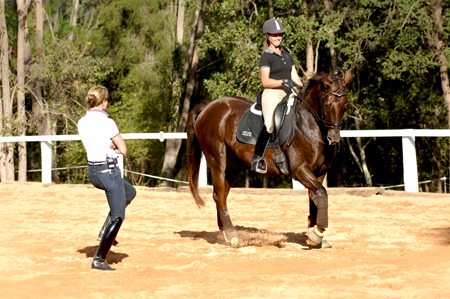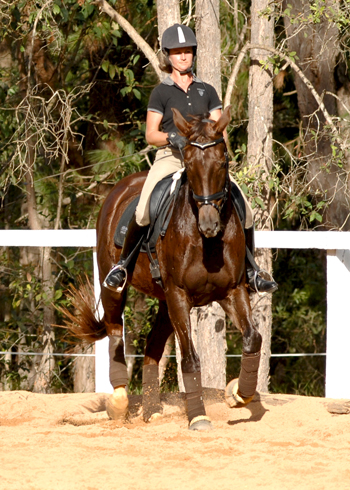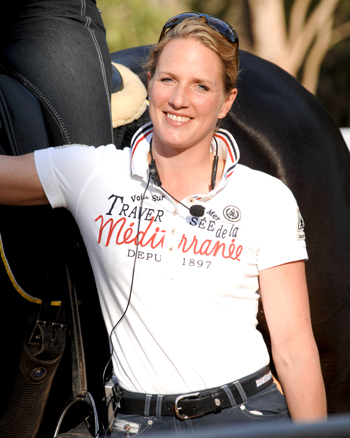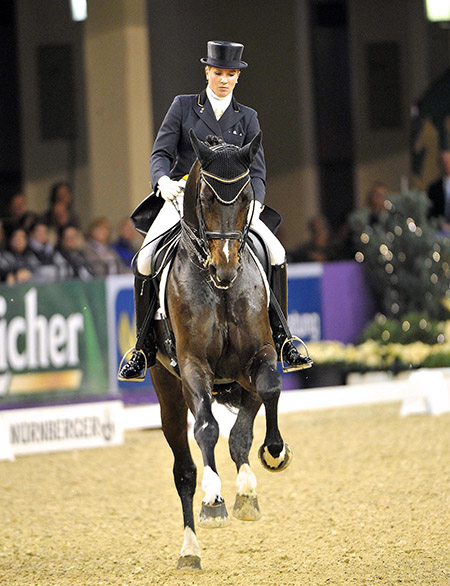
Anna-Sophie and the stallion Benetton Dream competing at the Nürnberger Burg-Pokal in the young horse FEI level competition
Queensland rider Dean Izzard, seems to be on a mission to instil classic German training in Queensland riders. Dean’s involvement with the Hanoverian Horse Society, and his connections with some of the best riders at the Hanoverian Auctions in Germany, has seen Jörn Kubelke, and more recently, Anna-Sophie Fiebelkorn, grace our shores.
Shannan Makauskas wrote the story in 2011, Alex Makauskas took the pix.
Anna Sophie pix Horse Magazine archives.
Queensland rider Dean Izzard, seems to be on a mission to instil classic German training in Queensland riders. Dean’s involvement with the Hanoverian Horse Society, and his connections with some of the best riders at the Hanoverian Auctions in Germany, has seen Jörn Kubelke, and more recently, Anna-Sophie Fiebelkorn, grace our shores.
Many dressage fans worship riders competing at the Olympics, but forget the trainers who specialise in getting horses there. You know – the ones who teach a horse those essential basics? Anna-Sophie is a respected trainer of young dressage horses and stallions in Germany, but her start in riding involved a lot of jumping.
Anna-Sophie’s mother rode dressage horses and her father rode showjumpers, leading Anna to take up both disciplines from a young age: “I can’t remember a time when I wasn’t riding horses. My parents always told me I had to do both disciplines. It wasn’t until I started my Bereiter studies that I specialised in dressage. Still, when I started riding in the Hanoverian Auctions I always had half dressage horses, half jumping horses. I only ended up in dressage because a few people saw me ride and offered me their dressage stallions to compete. Now I only do jumping for fun, and to vary the dressage horses’ routines.”
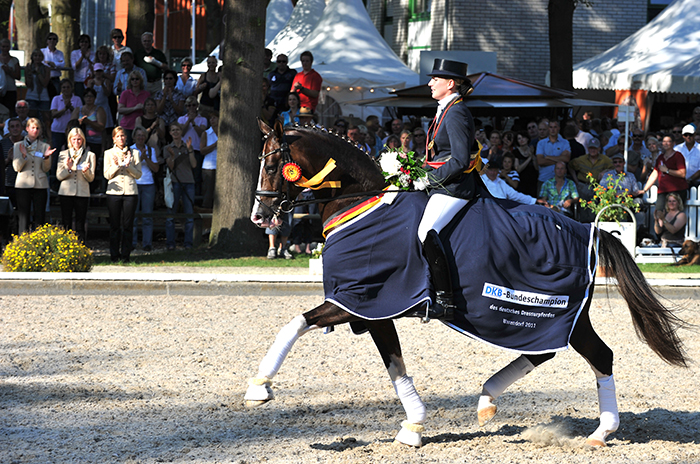
Anna-Sophie at one of her Bundeschampionat wins, with the stallion, Benicio
With a track record boasting wins and places in the most prestigious Young Horse Championships in the world, it’s no surprise Anna-Sophie’s passion for riding lies in the early stages of training: “I love to take a horse from unbroken to seven years of age, the time when they are first learning all the exercises. I think it’s boring to ride horses that are like taxis, horses that know everything already and you just sit there giving directions.”
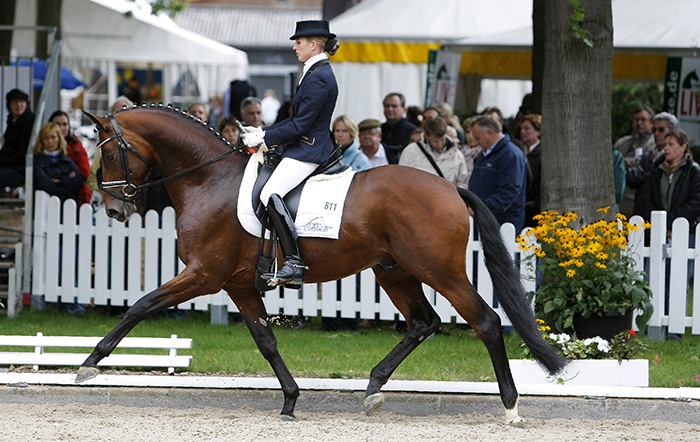
Anna-Sophie and the Trakehner stallion Imperio at the Bundeschampionat, he has gone on to a Grand Prix career with Hubertus Schmidt
The only downside to riding talented young horses is you don’t get to keep them for long: “Often I will nominate a horse for a competition and before I even get there the horse is sold. It’s hard, but I’ve learnt to live with it because it’s my job and I’m always getting new horses.”
When studying to become a Bereiter, Anna-Sophie was awarded the Stensbeck Plaque for her final exams and a scholarship with German Team rider Jürgen Koschel. But while Anna-Sophie’s delight is with training young horses, Jürgen’s is with FEI mounts: “He’s a very good trainer for higher levels. I think Jürgen’s speciality is training the Grand Prix horses, he’s very good with the piaffe, passage, and tempi changes, he’s a really good rider.”
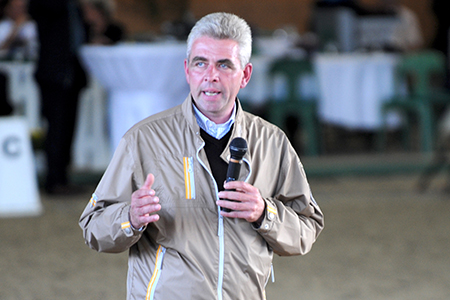
Finding the right trainer is like finding the right horse, you have to click, and when Anna-Sophie started training with National Young Rider Coach Hans-Heinrich Meyer zu Strohen six years ago, everything fell into place: “I think he’s the best trainer in the world. I remember our first session together, there was a harmony between us and now we know each other so well he only has to look at me and I know what he’s thinking. When I compete he has to be there so I can relax, he doesn’t have to say anything, if he just stands in the corner of the arena, I’m confident.”
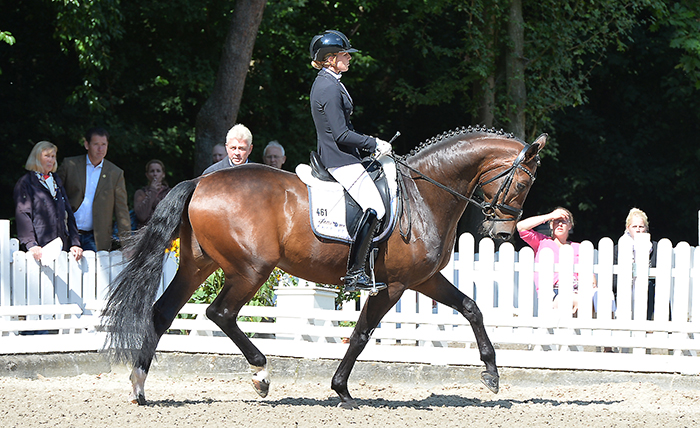
Anna Sophie and Fandango at the Bundeschampionat, Hans Heinrich standing in the corner
It’s the small adjustments and insights Hans-Heinrich provides from the ground that give Anna-Sophie reassurance: “He only makes little changes but these nibble away at the big picture until they become big changes. Training this way means you are always working in harmony with the horse. I have a lot of experience with different trainers and I’ve tried to take the best from each one and then make my own way. But with Hans-Heinrich it’s like a sundae with a cherry on top, his training completes mine.”
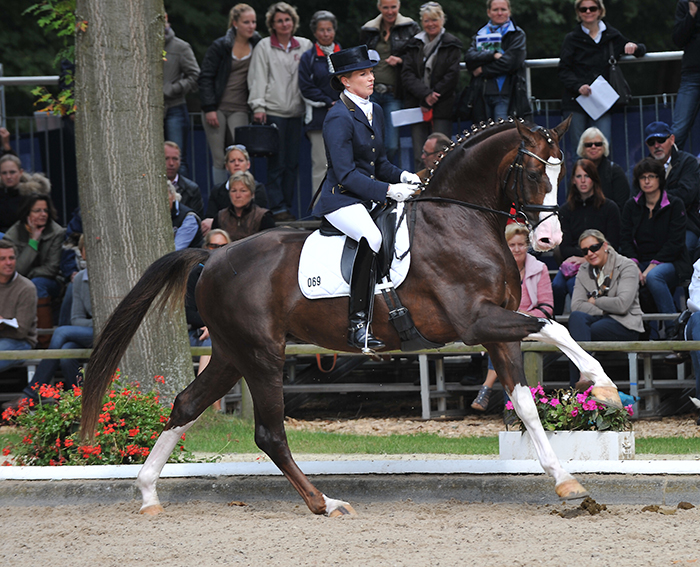
Despite her many achievements Anna-Sophie said: “I have no big dreams, I’m not someone who dreams of going to the Olympics or anything like that. I love what I have at the moment. I think if you love what you are doing, success will come.”
Anna-Sophie’s forte is taking horses for training, but she does enjoy seeing her students improve: “I love seeing a rider who’s absorbed what you taught them, and then the horses are going much better. I’ve had two days teaching in Australia and it’s very interesting seeing the horses change on the second day.”
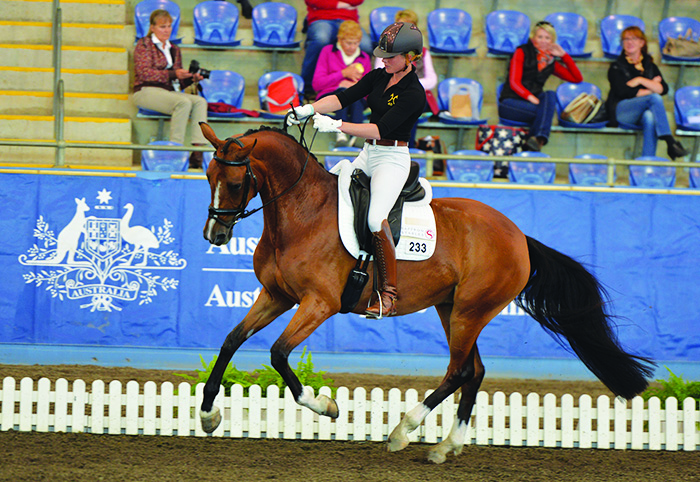
Anna-Sophie, guest rider and judge for the Hanoverian Young Horse classes at the Sydney CDI more recently, checking the basics of SPH Renaissance
next Anna-Sophie works on the basics with clinic riders
This was Anna-Sophie’s first trip to Australia and although she was impressed with the talent of our horses and riders, she felt we needed to brush up on the basics: “A lot of riders want to go up the levels too quick and they forget the basics. They can do tricks but they have no connection from the inside calf to the outside rein. I don’t know how they do that, but it’s why they end up with big problems. There’s a lot of potential here, they just need to establish the basics before they go FEI.”
One rider who was perfecting the basics before pushing her horse up the levels was Melanie Schmerglatt riding Gizmo (Gymnastic Star). Melanie allowed the seven-year-old gelding to mature before starting him under-saddle: “He still looked like a foal at five-years-old, so he’s only been in work since he was six.”
Now training Elementary/Medium level, Anna-Sophie had them working on creating a softer contact: “Keep your hands soft and low in front of you. Try to lengthen the neck in the beginning, warm him up, stretch the body, get his back up.”
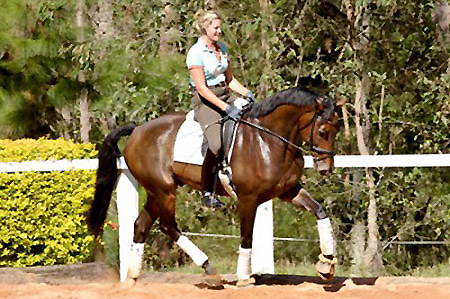
Working on the circle, Anna-Sophie focussed on the connection to the outside rein: “Make sure he starts to follow off your inside calf to your outside rein. Ask for more bending and flexing. Good, but with easy hands, be soft in your hands. You can ask using your wrist, you don’t need to use your whole arm.”
Maintaining this connection into transitions was the next hurdle: “Do transitions between trot and canter. Get him on your outside rein before you ask for canter. Take your time, do one million transitions until that works. More canter, from the first jump, ask him to jump. The neck lower, longer, and transition again. Better, your hands are better now.”
To reinforce the connection to the outside rein, Anna-Sophie had Melanie ride Gizmo on a ten metre circle in the corner and then into a shoulder-in, followed by a half circle onto the centreline and a leg yield back to the track: “You don’t need to use your inside hand to get him into the outside rein, use only your inside calf. Try to ride without using your inside hand. The inside rein is for showing him the way, just for a second, then he should stay there by himself. You have to hold him on the outside track with your inside calf.”
Melanie analysed her lesson: “Gizmo is very sensitive in the mouth and I’ve always had strong horses, so I’ve had to adjust to him and learn to relax when he comes against the hand. If I come with the hand, we clash, and Anna-Sophie helped me with that.”
Next Anna-Sophie works with Tori Welch
With prolific Australian Young Rider Champions, Victoria Welch and the seven-year-old gelding Brentanus (Brentano II), Anna worked on perfecting the half halt:
“Think you want to halt and the moment before he stops, ride him out. In the half halt he shouldn’t trot bigger, he should trot faster. He’s making passage, which he’s doing really well, but we want him to carry and to come quicker behind.”
The goal is to have complete control over transitions within the pace: “If he doesn’t react when you ask him to come back, completely stop, then go quickly forward again. Only ride forward for two or three horse lengths and then ride another transition.”
“Use your bottom in the half halt to create the rhythm. If he makes one jump, you make two, get him quicker. If he blocks through the neck during the half halt, play with the flexion a little bit and get him soft.”
When working on the canter half pass, Anna-Sophie pointed out riders are usually preoccupied with pushing the horse across with their outside leg and forgetting to use their inside calf to generate activity:
“Try to keep the bounce with your inside calf, with every jump he makes in the canter half pass you can create a quicker rhythm from your calf, active, active.”
Although Brentanus is just seven years old he’s built for the FEI work and Victoria’s classical riding has seen him progress quickly up the levels. Even Anna-Sophie is ready to let them play with the pirouettes:
“Don’t stay in it too long, just two or three steps and then out. You just want to feel him start to shift his weight.”
Victoria was optimistic after her lesson: “Because he’s so big, it really helps just doing a couple of strides of the pirouette until he understands it. Hopefully we’ll have an Advanced start this year, but we’re in no rush, he has to build a lot more strength yet.”
Next Anna-Sophie works with Emma Flavelle-Watts
The next combination was Emma Flavelle and Andiamo (Anamour), an eight-year-old gelding Emma trained from a young horse, to now, dabbling with the Grand Prix work. Anna-Sophie and Emma have one thing in common – Hans-Heinrich Meyer zu Strohen has been an influential figure in both of their riding careers. Emma based herself at Hans-Heinrich’s stables for six months on her first trip to Germany when she was 19 years old.
Anna-Sophie found it easier to work with Emma, Melanie and Victoria because of their experience with German trainers: “They know our system and they know the way we prefer to work the horse. With these riders the basics are more established, so it’s easier to work with them.”
Emma’s Andiamo hasn’t got the easiest neck to work with and Anna-Sophie focused on keeping the gullet open:
“When you’re warming up you can ask for more bending, flexing and engagement. Try to work on the poll and not the neck. We need to work on bending just the poll so he can open through the gullet more.”
Many horses who’ve learnt passage, like to offer the same rhythm as a way of avoiding the half halt, making them slow behind instead of quick:
“Don’t lose the rhythm in the half halt. When we bring them back we want them to go faster. Try to be more flexible with your inside calf when you ask for more activity, get a reaction. You have to get him more reactive from your leg, he isn’t sensitive enough from the calf.”
“Use your hips in the half halt to get the rhythm faster. Give him a few sharp aids from your calf to wake him up and get a reaction. He’s too slow with the hindleg, ask him shorter and faster, use your whip if you don’t get a reaction from your calf.”
The other pitfall of the half halt is the horse blocking through their back: “Play with the positioning of the shoulders, when you bring him back try flexing him to the outside, then flex him to the inside. Just quick, light aids to keep him working through his whole body, keep him round.”
“He loses the rhythm in the half pass and stops carrying when you get to the centreline. Ride passage around the corner so he carries himself and then go into a trot half pass. The moment he stops carrying himself, go straight, bring him back, and ask him to carry in passage.”
Using passage to get the horse engaged before going into the half pass helps them stay uphill through the movement: “It doesn’t matter if it’s a little bit slow, it’s more important you get the carrying power into the half pass so he doesn’t start to run. As soon as he starts to carry himself you can ride forward again.”
“If you ride a half pass and you’re happy with the bend and flexion, but they run, you’ll only ever get a seven. They have to carry and make it bigger to get the big marks. Once he’s doing that you can ask for more bend and flexion, but first he must carry himself.”
“This is a nice horse, you’ve done a good job with him.”
Anna-Sophie left Emma with one last tip:
“Don’t do so much riding when the session is finished. Everyone in Australia puts them deep and keeps trotting round and round for too long at the end of a session, you’ll wear them out for tomorrow. Just walk and stretch him.”
It was a pleasure to watch three talented combinations work with an instructor with so much passion. As Anna-Sophie taught, she rode every step with the rider – bouncing to the rhythm of the trot, bracing her shoulders back for the transitions and patting her tummy muscles for the half-halt. There are plans to bring her back at the end of the year; hopefully we’ve got the basics down by then!
Story – Shannan Makauskas & Photos – Alex Makauskas
Breed to Total Hope, available in Australia from IHB, go to www.ihb.com.au
